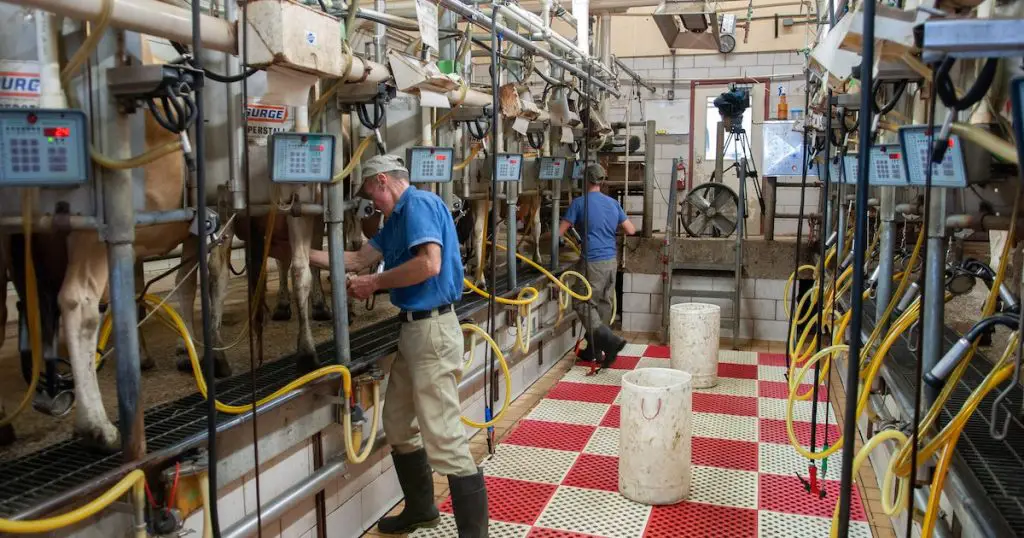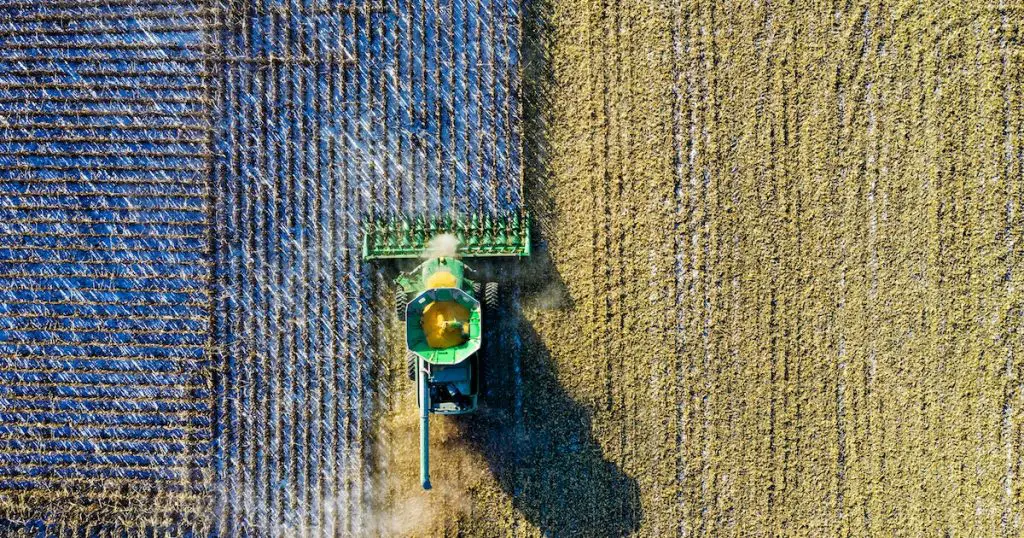Nestled in the heart of Arizona, Prescott has emerged as a significant hub for agricultural production. This region has successfully fused tradition with innovation to escalate its economic graph predominantly through agriculture.

Understanding Prescott’s economic role in agricultural production is pivotal in unraveling how this lush locale has optimized its green bounty for economic elevation and sustainability.
Historical Context
The agricultural narrative of Prescott is deeply rooted in its rich historical tapestry, portraying a journey from initial settlements, where early inhabitants recognized and embraced the fertile lands, to contemporary advancements.
The historical evolution of agriculture in Prescott is not merely a chronological progression but a story of adaptation, innovation, and a symbiotic relationship with the land.
From the cultivation of diverse crops by early settlers to the adoption of advanced farming technologies, the historical context provides a profound understanding of Prescott’s enduring agricultural legacy and its continuous transformation.
The Agricultural Roots of Prescott
Prescott’s agrarian roots extend deep into the rich soil of history. Early settlers were quick to recognize the fertile land’s immense potential, shaping the town’s trajectory towards agriculture-centered progress. For them, agriculture was not merely a livelihood but a symbiotic relationship with the land, ensuring mutual growth and sustainability.
This integration of nature with human endeavors marked the beginning of Prescott’s journey in agricultural evolution.
The development of irrigation systems was instrumental in solidifying Prescott’s agricultural foundation. The meticulous cultivation of diverse crops such as corn and beans allowed Prescott to flourish as a versatile agricultural hub, driving economic gains and stability.
Evolution of Agricultural Practices in Prescott
Over the centuries, agricultural practices in Prescott have witnessed substantial modifications. From rudimentary farming techniques, the region has embraced sophisticated methodologies and cutting-edge technologies, reinforcing its status as an agricultural powerhouse.
As farming methodologies progressed, the diversity in agricultural produce also expanded, enriching the agricultural tapestry of Prescott.
These transformations have not only boosted production but have also amplified the quality of agricultural goods, positioning Prescott as a reliable provider of premium agricultural products in the global market. Through these evolved practices, the region continues to uphold its agricultural legacy while adapting to contemporary demands.
Economic Impact
Agriculture acts as the backbone of Prescott’s economy, weaving a tapestry of economic growth, stability, and resilience. The agricultural sector significantly influences Prescott’s Gross Domestic Product (GDP), employing a substantial portion of the population and fostering other industries.
This sector is a convergence point of traditional practices and modern innovations, each contributing to the economic vitality of the region.
The synergistic impact of agriculture on market dynamics, trade, employment, and innovation positions Prescott as a significant agricultural economic entity, reflecting its multidimensional role in economic development and sustenance.
Overview of Prescott’s Economic Structure
Prescott’s economic fabric is intricately woven with strands of agriculture, technology, trade, and innovation. Agriculture serves as a cornerstone, propagating economic growth and fostering other industrial sectors. It acts as a catalyst, spurring developments and innovations that radiate through the economic structure, affecting trade, employment, and market dynamics.
Agriculture’s multi-faceted impact on Prescott’s economy underscores its indispensable role in shaping the region’s financial ecology. The interweaving of agricultural components within the economic framework reinforces the sustainability and resilience of Prescott’s overall economic health.
Contribution of Agriculture to Prescott’s GDP
Agriculture’s pivotal role in Prescott’s economy is manifested in its substantial contribution to the Gross Domestic Product (GDP). The sector has been instrumental in fueling economic growth, fostering stability, and ensuring resilience against economic fluctuations. Agriculture’s contribution to GDP is indicative of its central role in sustaining the economic vitality of the region.

Prescott’s diverse agricultural outputs, ranging from livestock to organic farming, collectively amplify its economic footprint. The harmonious blend of traditional and modern farming practices ensures consistent growth in agricultural productivity, driving economic prosperity and positioning Prescott as a pivotal player in the agricultural economy.
Employment Statistics in Agricultural Sector
Employment in Prescott’s agricultural sector is a testament to its economic significance. Agriculture has been a consistent source of employment, providing myriad opportunities across various sub-sectors, from farming to agribusiness. The United States Department of Agriculture (USDA) reports indicate a steady rise in agricultural employment, reflecting the sector’s robustness and adaptability.
The diversity in job opportunities within agriculture underscores its role as an economic stabilizer in Prescott. It not only provides livelihoods but also imparts skills and knowledge, facilitating holistic development of the workforce and contributing to the region’s economic dynamism.
Agricultural Segments
Prescott’s agricultural portfolio is a diverse tapestry, encompassing segments like livestock production, crop cultivation, organic farming, and agricultural technology. Each segment is distinct yet intertwined, contributing uniquely to the region’s economic vitality and agricultural richness.
Livestock anchors the economy with its multifaceted impact, crops add diversity with varied produce, organic farming brings sustainability to the forefront, and agricultural technology injects innovation and efficiency. Together, these segments construct the multifarious agricultural and economic landscape of Prescott, symbolizing harmony in diversity.
Livestock Production
Prescott’s agricultural spectrum is adorned with a vibrant range of livestock production, including cattle, poultry, and swine.
Livestock is not merely a segment but a substantial pillar supporting Prescott’s agricultural economy. It intertwines with various other sectors, creating a network of economic activities revolving around livestock commodities.
Economic Impact of Livestock
Livestock significantly influences Prescott’s economy through direct and indirect channels, propelling the region’s financial robustness.
The economic repercussions of livestock production are extensive, impacting market dynamics, trade balances, and employment opportunities. The multi-dimensional economic effects of livestock production affirm its relevance in Prescott’s agrarian and economic landscape.
Employment Generated by Livestock Production
Livestock production in Prescott is a vital employment generator, offering diverse roles across the value chain, from breeding to marketing. The sector’s employment spectrum is expansive, enabling individuals to explore various avenues within livestock management, fostering professional growth and skill enhancement.
Crop production is another essential facet of Prescott’s agricultural sector, offering a plethora of produce, from grains to fruits and vegetables. The varied crop portfolio enhances Prescott’s agricultural richness, contributing significantly to its economic prosperity.
Economic Contribution of Crops
The economic contribution of crop production in Prescott is immense, bolstering the region’s financial stability and growth.
Crop production’s influence on the economy is multifaceted, impacting trade, employment, and market structures. The diversified crop array ensures a steady supply of agricultural commodities, fortifying Prescott’s economic resilience.
Employment in Crop Production
Employment opportunities within crop production are vast, covering various stages from sowing to harvesting. These opportunities facilitate the acquisition of diverse skills and knowledge, enhancing the professional development of individuals involved in this sector.
In the quest for sustainability and quality, organic farming has carved its niche in Prescott’s agricultural scene. It symbolizes a balanced approach to agriculture, aligning production with ecological harmony.
Economic Relevance of Organic Farming
Organic farming’s economic relevance in Prescott is evident in its growing market presence and consumer preference.
Statistics on organic market growth depict a rising trend, reflecting the sector’s potential to be a significant economic driver. Organic products’ premium pricing and demand dynamics contribute to enhanced profitability and economic value.
Job Opportunities in Organic Farming
Organic farming extends diverse employment avenues, encompassing roles in cultivation, processing, and marketing. The sector’s growth trajectory promises sustained job creation, supporting economic development and individual prosperity.
Technological advancements and innovations are reshaping Prescott’s agricultural landscape, infusing efficiency and precision into agricultural practices.
Economic Influence of AgTech
The integration of technology within agriculture, or AgTech, is revolutionizing Prescott’s agricultural productivity and economic viability. AgTech’s economic implications are profound, optimizing resource utilization and enhancing yield quality and quantity. This tech-agriculture synergy is paving the way for economic elevation and sustainability in Prescott.
AgTech is not only a productivity enhancer but also a significant source of employment in Prescott. It offers varied roles from research and development to implementation, fostering skill development and professional growth within the agricultural sector.
Market Dynamics and Trade
Prescott’s market dynamics and trade are characterized by a vibrant interplay of supply, demand, prices, and trade balances, each significantly influenced by the region’s diverse agricultural output. The domestic market is a bustling ecosystem, with intricate pricing structures and consumer preferences shaping the economic landscape.
Meanwhile, international trade acts as a gateway, linking Prescott’s agricultural richness to global markets, and enhancing its economic footprint. Both domestic and international market dynamics are integral components, collectively fueling Prescott’s economic and agricultural prosperity.
Domestic Market
Prescott’s domestic market is a dynamic entity, reflecting the interplay of various economic forces and agricultural components.
It is a melting pot of supply and demand intricacies, price oscillations, and consumer preferences.
Supply and Demand Analysis
An analysis of supply and demand in Prescott’s domestic market reveals the delicate balance between agricultural output and consumer needs.
The oscillation in supply and demand governs pricing strategies and market equilibrium, influencing the economic vibrancy of the region.
Pricing Structures and Policies
Pricing in the domestic market is a complex mechanism, intertwined with multiple factors like production costs, market demand, and government policies.
The pricing structures impact the profitability and economic viability of agricultural products in Prescott.
International Trade
International trade is a critical aspect of Prescott’s economic structure, linking its agricultural wealth with global markets.
It is a conduit for economic expansion and diversification, enabling Prescott to showcase its agricultural prowess on the international stage.
Export Statistics and Impact
Exports are a significant revenue stream for Prescott, reinforcing its economic stability and growth.

The diversity in agricultural exports enhances Prescott’s global footprint and economic resilience, allowing the region to navigate through international market fluctuations effectively.
Import Dynamics and Economic Influence
Imports complement Prescott’s agricultural portfolio, introducing variety and catering to consumer preferences.
The import dynamics shape market trends and economic interactions, playing a vital role in Prescott’s economic ecosystem.
Government Policies and Support
Governmental interventions in Prescott play a pivotal role in steering its agricultural direction and dynamism. Through well-curated policies, regulations, and financial incentives, the government ensures that agriculture remains sustainable, innovative, and economically viable.
These frameworks provide both guidance and support, fostering an environment conducive to growth. By striking a balance between nurturing traditions and embracing modernity, governmental support ensures that Prescott’s agricultural sector thrives amidst changing global landscapes.
Agricultural Policies and Regulations
Government interventions in the form of policies and regulations are pivotal in steering Prescott’s agricultural trajectory.
These frameworks guide agricultural practices, ensuring alignment with economic objectives and sustainability goals.
Subsidies and Financial Support
Government subsidies and financial support act as catalysts, propelling agricultural growth and development in Prescott. These incentives alleviate financial burdens on farmers, promoting innovation and enhancing the competitiveness of Prescott’s agricultural sector.
Government initiatives play a transformative role in refining the agricultural economic landscape of Prescott. These initiatives foster an environment conducive to agricultural expansion and innovation, ensuring the sector’s sustained contribution to the region’s economic prosperity.
Programs and policies instituted by the government not only fortify the agricultural infrastructure but also imbue resilience and adaptability within the sector, enabling it to thrive amidst challenges and uncertainties.
Government-backed agricultural research and development initiatives have been pivotal in introducing innovative solutions and technologies to Prescott’s agriculture, bolstering productivity and economic gains. Such initiatives reinforce the agricultural sector’s robustness, positioning it as a significant contributor to Prescott’s economic resilience and growth.
Sustainable Agricultural Practices
In Prescott, sustainable agricultural practices are more than just methodologies; they are integral values that underscore the region’s agricultural pursuits. These practices aim for a balanced and harmonious relationship with the environment, focusing on resource optimization and ecological conservation.
The commitment to sustainability in agriculture reflects not only in the enhanced quality and diversity of the produce but also in the economic benefits realized through reduced dependencies and risk mitigation, marking Prescott as a beacon of sustainable agricultural development.
Importance of Sustainability in Agriculture
Sustainability in agriculture is a cardinal principle guiding Prescott’s agricultural endeavors. It is not a mere concept but an intrinsic value integrated within agricultural practices, ensuring the harmonious coexistence of agriculture with the environment.
The adoption of sustainable agricultural practices reflects Prescott’s commitment to ecological balance and environmental conservation.
Economic Benefits of Sustainable Practices
Sustainable practices in agriculture are not only ecologically beneficial but also economically rewarding for Prescott. These practices optimize resource utilization and enhance yield quality, contributing to economic stability and growth.
Sustainable agriculture offers tangible economic benefits by reducing dependency on non-renewable resources, mitigating risks, and enhancing market competitiveness.
Prescott’s Role in Promoting Sustainable Agriculture
Prescott has been a torchbearer in promoting sustainable agriculture, implementing eco-friendly practices, and encouraging biodiversity.
The region’s proactive approach to advocating sustainability has established it as a model for environmentally conscious agricultural development, inspiring regions far and wide.
Challenges and Opportunities
Prescott’s agricultural sector, while thriving, encounters multifarious challenges such as resource limitations, climate variability, and fluctuating market demands, necessitating innovative and resilient solutions. However, these challenges are juxtaposed with abundant opportunities.
Advancements in agricultural technology, the adoption of sustainable practices, and market diversification present promising prospects for enhancing agricultural productivity and economic prosperity.
The exploration and optimization of these opportunities are paramount for the continuous evolution and elevation of Prescott’s agricultural and economic landscapes.
Current Challenges in Prescott’s Agricultural Sector
Despite its agricultural prowess, Prescott faces myriad challenges, including resource constraints, climate variability, and market fluctuations.
Addressing these challenges is imperative for the continued growth and sustainability of agriculture in Prescott. Collaborative efforts involving government agencies, farmers, and other stakeholders are crucial in devising effective solutions to overcome these challenges.
Potential Opportunities and Future Prospects
Prescott’s agricultural sector harbors immense potential and opportunities. Technological advancements, sustainable practices, and market diversification are some avenues for future growth and development in the region.

The exploration and harnessing of these opportunities are crucial in elevating Prescott’s agricultural and economic landscape to new heights, ensuring its sustained progress and prosperity.
Frequently Asked Questions:
In this section, we will be delving into some of the most common inquiries and curiosities that surround our topic.
How has Prescott’s agricultural landscape evolved over the years?
Prescott’s agricultural landscape has transformed significantly, transitioning from traditional farming practices to incorporating advanced technologies and sustainable methods, enhancing both productivity and ecological harmony.
What are the key agricultural segments contributing to Prescott’s economy?
Livestock production, crop production, organic farming, and agricultural technology are the key segments contributing significantly to Prescott’s economy, each playing a distinct role in economic development and diversification.
How significant is the impact of government policies on Prescott’s agricultural economy?
Government policies and initiatives have a profound impact on Prescott’s agricultural economy. They guide the sector’s development, provide financial support, encourage innovation, and ensure sustainability, shaping the overall agricultural economic framework of the region.
What role does sustainable agriculture play in Prescott’s agricultural economic framework?
Sustainable agriculture is integral to Prescott’s agricultural economic framework. It optimizes resource use, mitigates environmental impact, and offers economic benefits, contributing to the region’s economic stability and growth.
How do agricultural technology and innovation contribute to Prescott’s economy?
Agricultural technology and innovation enhance productivity, efficiency, and quality in Prescott’s agricultural sector, translating to economic gains, market competitiveness, and job creation, thus playing a pivotal role in economic development.
Conclusion: Prescott’s Economic role in Agricultural production
Prescott harmoniously blends agricultural tradition and innovation, contributing significantly to its robust economic framework. This region, rich in agricultural diversity and marked by a spirit of sustainability and technological advancement, plays a crucial role in shaping economic activities, employment, and market dynamics.
Government initiatives and policies further strengthen this agricultural haven, helping navigate challenges and seize opportunities for future growth. Prescott stands as a testament to the boundless possibilities inherent in agricultural richness and economic resilience.



Leave a Comment
You must be logged in to post a comment.